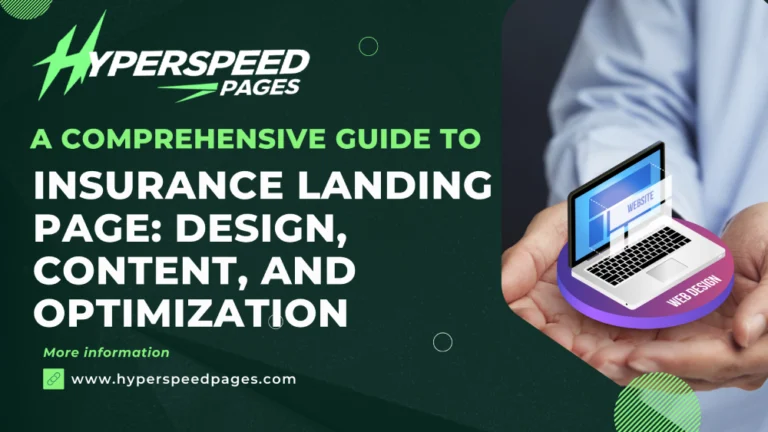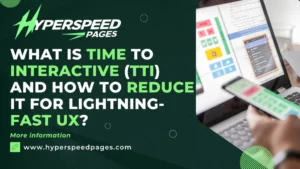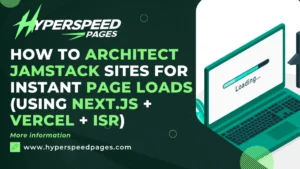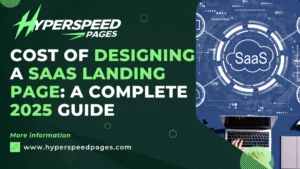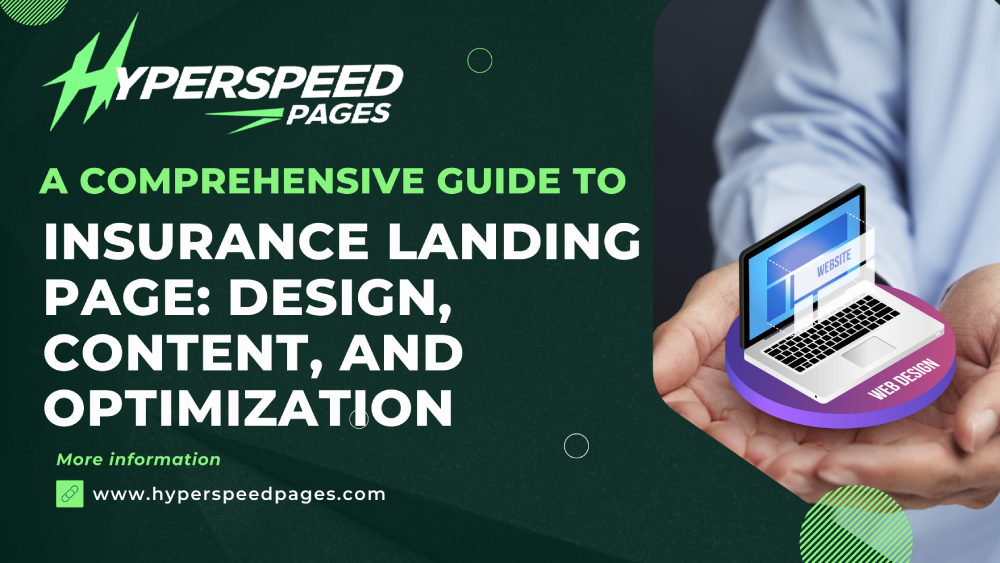
A well-designed landing page is the cornerstone of any successful online marketing strategy. For insurance companies, this is particularly crucial. The competition in the insurance industry is fierce, and consumers have countless options at their fingertips. Its primary goal is to drive a specific action, like requesting a quote, signing up for a policy, or downloading a brochure. We’ll cover the key elements, best practices, and strategies to ensure your landing page stands out and drives conversions.
What is an Insurance Landing Page?
An insurance landing page is a standalone web page specifically designed to convert visitors into leads or customers. Unlike a homepage, which serves as a general introduction to your company, a landing page is tailored to a specific marketing campaign or offer. The goal is to focus the visitor’s attention on a single action, whether that’s filling out a form, requesting a quote, or signing up for a newsletter.
Why is an Effective Landing Page Important for Insurance Companies?
- First Impressions Matter: A web landing page is often the first point of contact between your company and potential customers. A well-designed page can create a positive first impression, establishing trust and encouraging further engagement.
- Increased Conversion Rates: An optimized landing page can significantly increase your conversion rates. By focusing on a specific action, you guide visitors toward taking the desired step, whether that’s submitting their contact information or purchasing a policy.
- Improved ROI: A landing page that converts effectively maximizes the return on your marketing investment. By capturing more leads and customers, you make the most of your advertising spend.
Key Elements of an Insurance Landing Page
To create a successful insurance landing page, you need to include several key elements. Each plays a crucial role in guiding the visitor toward conversion.
1. Compelling Headline
Your headline is the first thing visitors see when they land on your page. It should be clear, concise, and compelling. The headline should immediately convey the value proposition of your offer and grab the visitor’s attention.
Example: “Protect Your Future with Affordable Life Insurance—Get a Free Quote Today!”
2. Subheadline
The subheadline supports the main headline by providing additional information or context. It should be brief and reinforce the message of the headline.
Example: “Flexible plans tailored to your needs, with coverage options for every stage of life.”
3. Hero Image or Video
A high-quality hero image or video at the top of your landing page can enhance the visual appeal and make a strong emotional connection with visitors. The imagery should be relevant to your offer and reflect the brand’s identity.
Example: A family enjoying a peaceful moment together, representing the security and peace of mind that insurance provides.
4. Clear and Concise Copy
The copy on your landing page should be clear, concise, and focused on the benefits of your offer. Avoid overwhelming visitors with too much information; instead, highlight the key points that will motivate them to take action.
Benefits: “Secure your family’s future with a plan that fits your budget.”
Features: “Flexible payment options, comprehensive coverage, and quick claims processing.”
5. Call to Action (CTA)
The CTA is arguably the most important element of your landing page. It tells visitors what you want them to do next, whether that’s requesting a quote, signing up for more information, or purchasing a policy. The CTA should be prominently displayed and clearly worded.
Example: “Get Your Free Quote Now” or “Start Your Application Today.”
6. Lead Capture Form
A lead capture form is where visitors submit their information in exchange for something of value, such as a quote or a consultation. Keep the form simple and ask for only the necessary information. The fewer fields, the better—long forms can discourage visitors from completing them.
Example: Name, email, phone number, and a dropdown menu for selecting the type of insurance they’re interested in.
7. Social Proof
Social proof, such as customer testimonials, reviews, and trust badges, can help build credibility and trust. Showcasing positive experiences from other customers can reassure visitors that they’re making a good decision.
Example: “See why over 10,000 families trust us with their insurance needs.”
8. Value Proposition
Clearly outline what makes your insurance offering unique or superior to competitors. This could be in terms of pricing, coverage options, customer service, or any other differentiator.
Example: “Get comprehensive coverage at the most competitive rates, with 24/7 customer support.”
9. Supporting Images or Graphics
Use supporting images or graphics to illustrate key points or benefits. This could include icons, infographics, or comparison tables that make complex information easier to digest.
Example: A comparison chart showing the advantages of your insurance plans over competitors.
10. Industry Badges
Industry badges like secure payment icons, BBB accreditation, or industry awards can enhance credibility. Display these prominently to reassure visitors that your company is legitimate and trustworthy.
Example: “Rated A+ by the Better Business Bureau” or “Winner of the 2024 Best Insurance Provider Award.”
11. Mobile Optimization
With more people browsing the web on mobile devices, ensuring your landing page is mobile-friendly is critical. The page should load quickly, and the layout should be responsive, meaning it adjusts to fit different screen sizes.
Layout of an Effective Insurance Landing Page
The layout of your insurance landing page plays a significant role in its effectiveness. A well-structured page guides the visitor’s eye through the content in a logical order, leading them to the CTA.
1. Header Section
- Headline: Bold and prominent at the top.
- Subheadline: Just below the headline, smaller but still noticeable.
- Hero Image/Video: Full-width image or video just below the subheadline.
- CTA Button: Positioned prominently, either within or just below the hero section.
2. Main Content Area
- Introduction: Briefly explain the offer and why it’s valuable.
- Value Proposition: A short paragraph or bullet points highlighting what sets your insurance apart.
- Supporting Graphics: Images or icons that visually represent the key points.
3. Social Proof and Trust Signals
- Testimonials: A section with customer testimonials, ideally with photos and names.
- Trust Badges: Display security icons, awards, or accreditations prominently.
- Statistics: If applicable, include statistics that showcase your success (e.g., “Join 20,000 satisfied customers”).
4. Lead Capture Form
- Form Placement: Either in a sidebar, a sticky header, or after the main content. It should always be above the fold (visible without scrolling).
- Form Fields: Keep them minimal—ask only for essential information.
5. Footer Section
- Secondary CTA: A final call to action to catch any undecided visitors.
- Contact Information: Phone number, email, and a link to your main website or other resources.
- Privacy Policy Link: Reassure visitors that their information will be kept secure.
Also read: Find out all the latest technologies shaping insurance industry
Best Practices for Optimizing Your Insurance Landing Page
Creating a landing page is only half the battle; you also need to optimize it to ensure it performs well. Here are some best practices to keep in mind:
1. A/B Testing
Test different versions of your landing page to see what works best. This could include testing different headlines, CTAs, images, or even the placement of your form. A/B testing allows you to make data-driven decisions that can significantly improve your conversion rates.
2. Page Load Speed
A slow-loading page can lead to high bounce rates. Ensure your landing page loads quickly by optimizing images, using a reliable hosting service, and minimizing the use of heavy scripts.
3. SEO Optimization
While landing pages are typically used for paid campaigns, optimizing them for search engines can drive organic traffic. Use relevant keywords in your headlines, subheadlines, and meta descriptions. However, ensure that SEO optimization doesn’t compromise the user experience.
4. Consistency Across Campaigns
Ensure that your landing page matches the messaging of the ads or emails that led visitors there. Consistency in design, tone, and messaging helps reduce confusion and improves the likelihood of conversion.
5. Monitor Analytics
Regularly check the performance of your landing page using analytics tools. Monitor metrics such as conversion rates, bounce rates, and average time on page. Use this data to make informed adjustments and continuously improve your landing page.
A well-designed insurance landing page can be the difference between a visitor bouncing away or becoming a lifelong customer. Take the time to craft a page that reflects your brand, speaks to your audience, and ultimately drives the conversions you need.
SOURCE:

